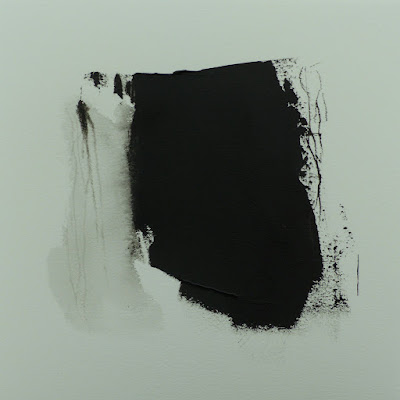I'm settling into my
residency at the Baer Art Center in Iceland. It's been nearly a week now and my
eyes and mind are filled with many sights that are so different from the part
of the world where I live (in the country outside of Toronto, Canada).
The residency is located
on a farm near the town of Hofsos in Northern Iceland on the shores of a fiord
called Skagafjordur. The owners breed Icelandic horses. One of the most
exciting things our group of five residents has done, was to hike up into a nearby
valley, after being dropped off part way up. We passed through a couple of cattle
gates and across a small river to where the horses are allowed to run free for
the summer. They were curious, and cautiously came toward us and surrounded us,
allowing us to pat them.
Yesterday, we drove around
the north part of the peninsula, through three tunnels, that connect formerly isolated
towns. One of the tunnels was a one-way road, built in 1967, narrow and scary. The other two are
newer, just completed in 2010. One of the tunnels is 4km long and the second is
7km. The traffic there was also one way, with travellers going south having the
right of way. Travellers going north have to pull into one of the passing
places inside the tunnels.
We continued south to Akureyri, at the bottom of that fiord, where there is a small but wonderful Icelandic Folk and Outsider Art Museum.
Akureyri is a beautiful
and hilly city, the second largest city in Iceland. It was a hot day
for Iceland, and we strolled around the city center in shirtsleeves. After a dinner of Arctic Char we drove an hour and a half back to Baer,
inland, along the #1 Highway through the Oxnadalur valley.
a |
| Akureyri |
My work is slowly
changing as I explore black and white acrylics, ink, pigment sticks and various
other supplies I brought along with me.
I'm looking forward to what the next few weeks will bring.













thank you again - beautiful!
ReplyDeleteI love how you write, think, take in your surroundings, explore media, and produce sensitive images as you take in your experiences. Thank you for being you...and sharing.
ReplyDeleteGreat to see and read your post, Jan. A strong start for your time there. Do you get together with the other residents to discuss work, etc.
ReplyDeleteHi Sally, We get together for breakfast, lunch and dinner, so there's lots of discussion and conversation.
DeleteThat last painting is exquisite. A perfect jewel.
ReplyDeleteWhat a wonderful place for inspiration. I'll look forward to seeing what you produce. These two pieces do illustrate the graphic lines of Iceland's landscape.
ReplyDeleteAs usual - inspirational - thank you :)
ReplyDeleteLike others have already said - the last painting is truly marvellous
Delighted that you are having such a good residency experience. Liz
Amazing images Janice - I can practically smell the air. I have such great memories of feeling very creative while in residency in Iceland a few years ago. I look forward to your regular teasing updates!
ReplyDelete